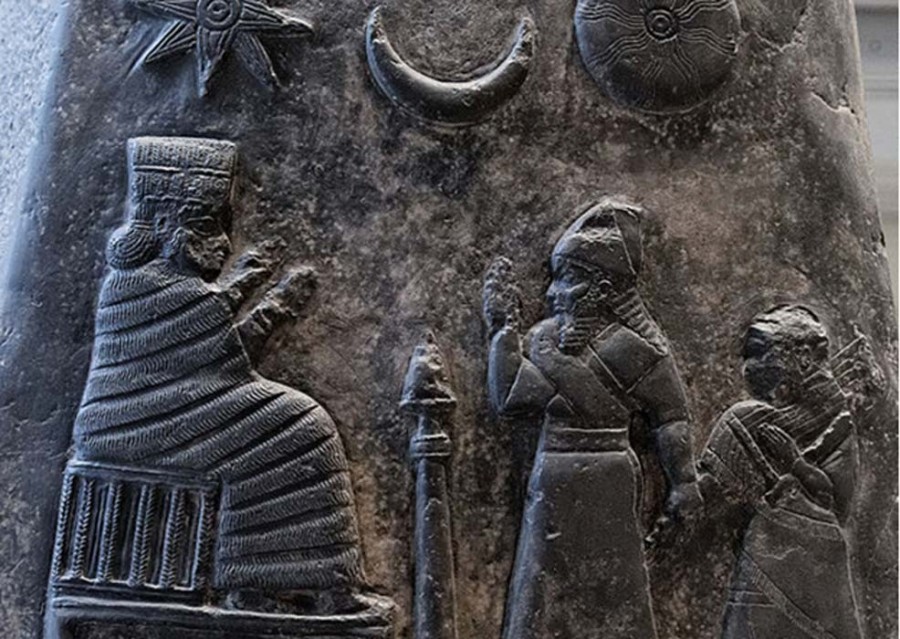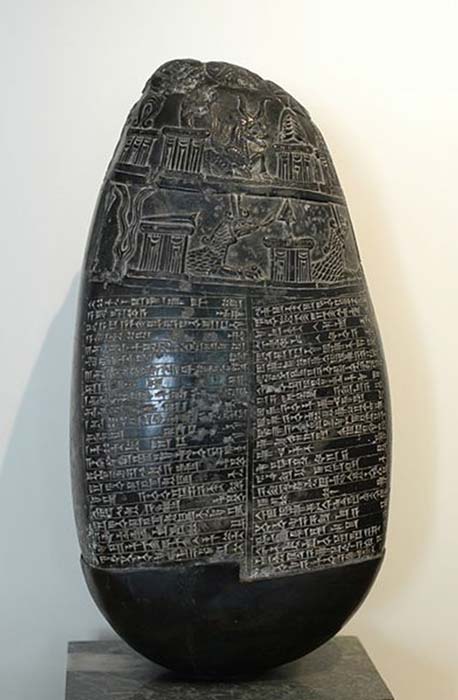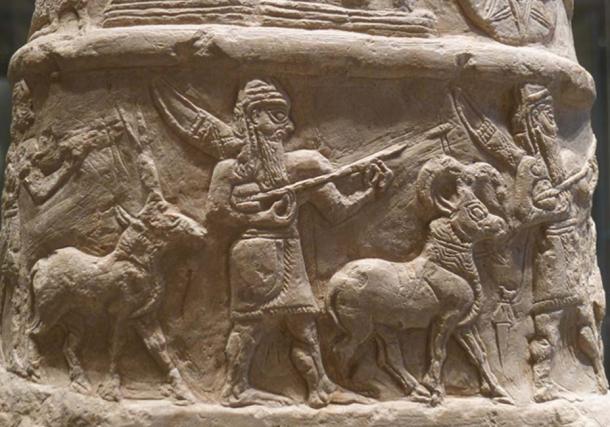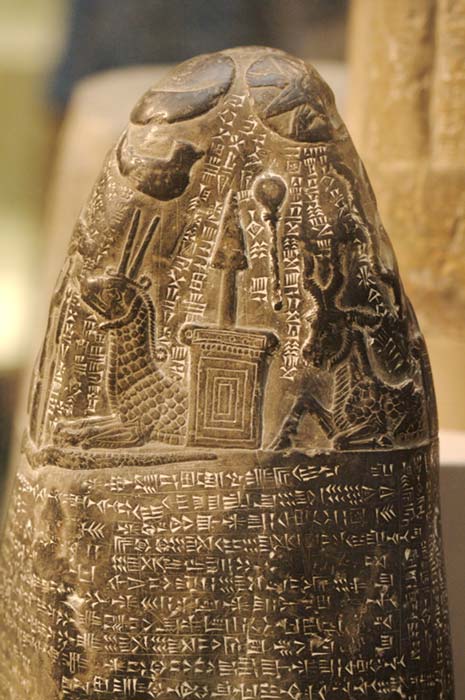
A kudurru (meaning ‘boundary’ or ‘frontier’ in Akkadian) is a type of stone document used in ancient Mesopotamia. While stone monuments have been used at various times in ancient Mesopotamia, it is especially associated with the Kassite period. The kudurru served as a record of gifts, especially land grants, bestowed by the king onto a person. Today, examples of these boundary stones are exhibited in museums around the world.
The Origin of the Kudurru
Prior to the Kassite period (known also as the Middle Babylonian period), which lasted from around the 16 th century BC to the middle of the 12 th century BC, stone monuments like the kudurru were already being produced. These were known as narus. It was, however, only during the Kassite period that kudurrus began to be made. These were highly polished stone, normally limestone, slabs / blocks onto which royal grants were recorded.
The kudurru derived its name from the fact that these gifts usually took the form of land grants. Although one might imagine that the kudurru was used to physical mark the boundaries of a person’s land, this was not the case. Instead, a kudurru would have been kept in a temple, while a clay copy of the original was given to the landowner.

Babylonian kudurru of the late Kassite period. (Rotatebot / Public Domain)
Kudurrus Were Considered Sacred
For modern scholars, kudurrus also provide some insight into the religious beliefs of the ancient Mesopotamians. As mentioned earlier, kudurrus were kept in temples, an indication that they had some sacred value attached to them. They were meant to be visible not only by worshippers who came to the temple, but also by the gods. The association with the divine realm is also evident in the imagery carved onto these stones.
In general, all the gods responsible for the preservation of the universe are depicted on the kudurru. The gods are arranged in rows according to their position in the divine hierarchy and are represented by their symbols. The ordering of the gods on these boundary stones reveals to us the beliefs held by the ancient Mesopotamians regarding the organization of both the cosmos and the divine realm.

A kudurru, boundary stone, from ancient Mesopotamia. (Mbzt / CC BY-SA 3.0)
The top row of the stone was reserved for the astral deities – the moon god, Sin, the sun god, Shamash, and the goddess of Venus, Ishtar. The next row was occupied by the sky god, Anu, the air god, Enlil, the god of freshwater, Ea, and the earth goddess, Ninhursag. These were important gods, as they were responsible for maintaining the equilibrium of the universe. In some instances, there is a line separating these gods from the astral deities, while in others they are placed together. The next three rows were occupied by the warrior gods, the gods in charge of the earth’s fertility, and the deities of the underworld respectively.
What Was the Purpose of the Kudurru?
Like the arrangement of the deities, the text inscribed on kudurrus also follows a certain order. The text may be divided roughly into two parts. The first contains the nature of the land grant, as well as the clauses attached to it, whereas the second part contains a list of curses to deter anyone from violating the agreement. These curses called upon the gods to punish those who violated the agreement. Thus, the land grants documented on the kudurru were not merely contracts made among human beings but also with the gods, and those who dared break them risk divine retribution.
- The Lost Years of Nabonidus, Last King of the Neo-Babylonian Empire
- Cursing Stones of Ireland: When Christianity and Pagans Pooled Their Sacred Water
- Nabopolassar: The Rebel Ruler of Babylonia Who Had the Gods on His Side

The text on the kudurru described the land grant and conditions. (Dudubot / CC BY-SA 2.0)
Although the Kassite period came to an end around the middle of the 12 th century, the popularity of the kudurru continued and is considered to be a legacy of this dynasty. This is evident, for instance, in the kudurrus dating to the reign of Nebuchadnezzar I, a ruler of the Isin dynasty. This was the dynasty that succeeded the Kassites. Kudurrus have been unearthed by archaeologists and are on display in various museums around the world today including the British Museum and the Louvre Museum.